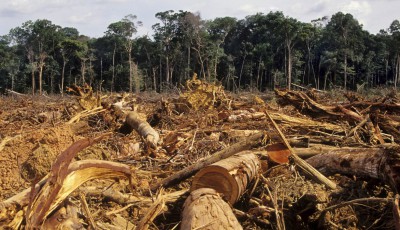The cost of inaction – Recognizing the value at risk from climate change
 GLOBE-Net, July 24, 2015 – A report from the Economist Intelligence Unit (EIU) warns that the asset management industry, and the wider community of investors of all sizes, is facing the prospect of significant losses from the effects of climate change.
GLOBE-Net, July 24, 2015 – A report from the Economist Intelligence Unit (EIU) warns that the asset management industry, and the wider community of investors of all sizes, is facing the prospect of significant losses from the effects of climate change.
Assets can be directly damaged by floods, droughts and severe storms, but portfolios can also be harmed indirectly, through weaker growth and lower asset returns.
Climate change is a long-term, probably irreversible problem beset by substantial uncertainty.
Crucially, however, climate change is a problem of extreme risk: this means that the average losses to be expected are not the only source of concern; on the contrary, the outliers, the particularly extreme scenarios, may matter most of all.
The findings in this report indicate that climate change is likely to represent an obstacle for many asset owners and managers to fulfil their fiduciary duties.
Brian Gardner, the editor of the report, said: “Investors currently face a stark choice. Either they will experience impairments to their holdings in fossil-fuel companies should robust regulatory action on climate change take place, or they will face substantial losses across the entire portfolio of manageable assets should little mitigation of climate risk be forthcoming.”
See Also Norway confirms $900bn sovereign wealth fund’s major coal divestment
“Charting a path away from these two options should be a strong motivation for long-term investors to engage with companies in their portfolios and to shift investments towards a profitable, low-carbon future,” he added.
Why this report is important
The value at risk to manageable assets from climate change calculated in this report is US$4.2trn in present value terms.
The tail risks are more extreme; 6°C of warming could lead to a present value loss worth US$13.8trn, using private-sector discount rates.
From the public-sector perspective, 6°C of warming represents present value losses worth US$43trn — 30% of the entire stock of the world’s manageable assets.
Impacts on future assets will come not merely through direct, physical harms but also from weaker growth and lower asset returns across the board. The interconnected nature of the problem will reduce returns, even on investments unharmed by physical damage.
Although direct damage will be more localized, indirect impacts will affect the entire global economy; accordingly, asset managers will face significant challenges diversifying out of assets affected by climate change.
As growing numbers of institutional investors address the climate-related risks in their investment portfolios, they are driven to act by risk management goals, financial returns and regulatory mandates.
Institutional investors need to assess their climate-related risks and take steps to mitigate them; but very few have begun to do this.
Increasingly, says Philippe Desfossés, CEO of French pension fund Établissement de Retraite Additionnel de la Fonction Publique (ERAFP), asset managers may be called to account for not incorporating sustainability into the management of their portfolios, “because now it has really been made obvious that carbon is a risk, and it’s a risk for business,” he says.
In case of legal dispute, he points out: “It’s now very difficult for anyone to say ‘Oh, I didn’t know it was a risk’.”
Regulation has failed
Regulation has largely failed to confront the risks associated with climate change borne by long-term institutional investors.
To enable meaningful risk analyses, public companies should be required to disclose their emissions in a standardized and comparable form.
In some cases, investment management mandates stipulate that funds must be managed with sustainability in mind but without sacrificing financial returns—especially in public pension funds.
“We are regulated by law, and the law says that we should allocate capital on a 30-40-year horizon,” explains Mats Andersson, CEO of Swedish public pension fund Fjärde AP-fonden (AP4). “The law also states that we should take sustainability into account without giving up returns.”
This report analyses the current state of regulation and proposes steps towards more effectively addressing climate-related risks.







